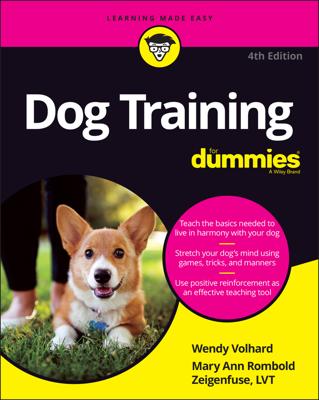Training a puppy not to jump on you when you get home requires discipline — from you. First, you need to understand why a puppy jumps. Eye contact is a top method of canine communication. Our eyes are above theirs, so to greet us properly, dogs jump up to meet our eyes. The first time this happens, a hug follows. "Isn't that cute?" After about the tenth jump, it's not so cute, and you gently push the pup away. But to a dog, pushing means confrontational play. The puppy jumps higher and harder the next time. So you try a little toe stepping, paw grabbing, and yelling — all with the same effect. Your dog thinks jumping is very interactive and very fun.
Dogs that jump need to learn the four-paw rule — they will not receive any attention, at all, until all four paws are on the floor.
The best way to remedy jumping when you arrive home is to ignore your pup. Try it for a week. Don't give in!
- Come home and ignore your dog until he's given up the jumping vigil.
- Keep a basket of balls or squeaky toys by the door. When you come in, toss one on the ground to refocus your dog's energy.
- If your dog's crated, don't let him out until he's calm.
If you have a big puppy or a super persistent jumper, you have two options: Fill a plant mister with 50 percent vinegar and water to spray a boundary in between your bodies, or put on an overcoat to protect yourself, and calmly look away. Whether it takes 2 minutes or 20, go about your business until your dog calms down.
If you have kids, tell them to "look for rain" by crossing their arms in front of their chest and looking to the sky. You do the same. Don't look down until the coast is clear. Consistency is key. If one family member follows the program but the others encourage jumping, your dog will jump-test all visitors.
If your dog still insists on jumping, keep a lead (short or long) attached to her collar. When she jumps, grasp the lead and snap her sideways quickly as you continue to ignore her (give no eye contact, body language, or verbal corrections).
Puppies mimic their leaders' energy levels. If you come home to an excited dog and you get excited, you're sending the message that his excitement is acceptable. Instead, come in calmly and wait to greet your puppy until he's settled down, too. Then get a toy and play with him.

